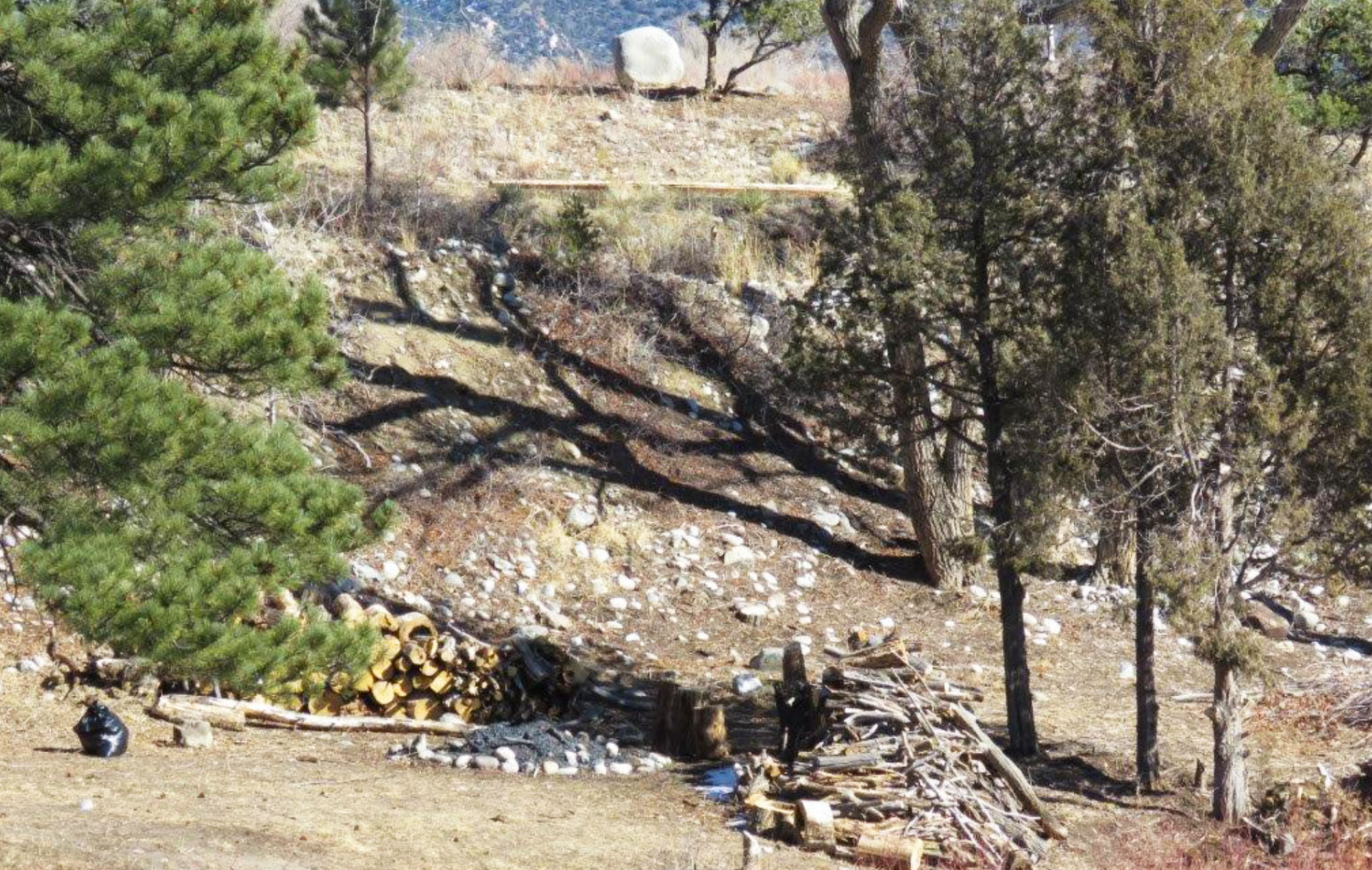Chaffee County Planning Commission will continue the public hearing for the Aspire Tours proposed land-use changes more than a year after the hearing began.
The continued hearing is slated for 6 p.m. Tuesday, Sept. 28, at the County Building, 104 Crestone Ave. in Salida.
The riverfront property consists of 44 rural-zoned acres at 11302 County Road 190W, which is accessed from Colorado Highway 291. The property currently serves as a wildlife corridor for a pronghorn herd, as documented by local residents.
Kathrin Troxler of Wheatridge owns the property and co-owns Aspire Tours with Brian Erdner, also of Wheatridge. Troxler submitted an application for the project, characterized as “a business development” in the County’s public notice for the hearing. Troxler declined to comment for this article.
Residents near the proposed development expressed opposition to the project when it was first proposed and continue to oppose the development, which, they contend, does not fit in with the character of their rural neighborhood.
Additional concerns include hazards from increased traffic on CR 190W and the sustainability of the aquifer that supplies residential wells in the area.
In comments to the County dated Sept. 19, Mick Barry, who resides near the proposed development, contends that the Aspire application does not meet the County Land Use Code guidelines for the Rural Zone:
“Open rangelands and agricultural lands that are the original roots for the rural character of Chaffee County. The intent of the Rural zone is to allow agricultural uses of any kind and to promote development that enhances the agrarian and rural character of the County” (Section 2.2.3).
The Aspire Phasing and Development Plan touts an agricultural component of the proposed development:
“The Front Range based adventure tourism company is expanding its business into the growing fields of the Agro-tourism (sic) and wedding venues. … Aspire plans or (sic) creating a dynamic base camp which will offer artisain (sic) micro cabins, pictureesce (sic) event venues, Bio-dynamic farmland and adventure outfittering (sic).”
Closer examination reveals that the “biodynamic” agricultural component consists of a 1-acre garden, a barn and unspecified farm animals.
Additionally, “biodynamic agriculture lacks strong scientific evidence for its efficacy and has been labeled a pseudoscience because of its reliance upon esoteric knowledge and mystical beliefs.” The practice uses “methods that are more akin to sympathetic magic than agronomy, such as burying ground quartz stuffed into the horn of a cow, which are said to harvest ‘cosmic forces in the soil.’”
Barry points out that Aspire’s three-phase development plan focuses on commercial activities while providing few details about the proposed agritourism elements.
The Aspire application describes a 36-month process to construct infrastructure, roads, commercial gathering areas, 10 campsites, eight cabins, two comfort stations, an outfitter post, an agricultural barn, a residential dwelling, and an auxiliary dwelling unit for a total occupancy of 84 (“77 commercial and 7 residential”).
The application also proposes workshops for yoga, painting, fly-tying and meditation; adventure tourism, including rafting, hiking, mountain biking and fishing; public boat access to the Arkansas River; a commercial parking lot; concerts; and weddings – all commercial activities that Barry asserts should require a zoning change to Rural Commercial/Recreational.
When the public hearing for the Aspire development began in 2020, the Planning Commission agreed with local residents’ concerns about impacts to traffic and water, requiring a traffic study and a water adequacy study.
A review of the two studies submitted by Aspire reveals shortcomings with both.
Jerry Raski, Ph.D., mechanical engineering, said the traffic study doesn’t meet the requirements of the Land Use Code, which states that a “basic traffic analysis” must “depict existing Average Daily Traffic Count information.”
The Aspire traffic study originally stated that the analysis is based on estimates, but was updated to include data from the County.
Raski contends that Aspire should be required to perform a “detailed traffic study,” as defined by the Land Use Code, because the volume of traffic that the development would generate exceeds current levels by more than 30%.
Raski submitted a “Risk and Liability Assessment of the CR190W safety hazards” to the County, documenting hazards based on “Federal, State, and County road standards.”
One of those hazards is a “10% grade dip in CR190W; such that, the available sight distance is not sufficient to enable a vehicle, traveling at the speed limit, to stop before reaching an object in its path.” Additionally, Raski noted that this section of road remains covered in snow and ice throughout the winter.
Other road hazards include sections that do not accommodate two-way traffic. In one place, a short ditch culvert narrows travel lanes to 9 feet, “too narrow for two-way traffic at the posted speed limit,” and “The potholes on the paved portion of CR190W narrow the travel lanes to one-way traffic.”
Raski also quotes comments from all three County Commissioners acknowledging the need to improve CR 190W during a public hearing on the nearby Peak View development. (The Planning Commission decision regarding this application can be appealed to the County Commissioners.)
Raski’s public comments to the County conclude by documenting the liability issues the County would incur if the development were to be approved without addressing road safety standards on CR 190W.
The Aspire Tours Water Supply Plan purports to address the water-adequacy concerns of the Planning Commission, but it presents no actual data for the aquifer that the Aspire development would share with multiple established residences.
The Aspire plan cites “a hydrogeologic study of the Upper Arkansas River Basin” conducted by the U.S. Geological Survey. However, that study, commissioned by the Upper Arkansas Water Conservancy District, did not include the aquifer in question.
The Aspire application also calls for planting a significant number of trees to minimize visual impacts by screening structures, but Aspire’s own submittals acknowledge, “The native plant community is mostly grass.”
Since existing soil and climate conditions do not support trees, establishing and sustaining enough trees to accomplish “visual screening” will require a significant quantity of water not adequately accounted for in the Aspire application, and nearby residents have already experienced issues with their wells.





